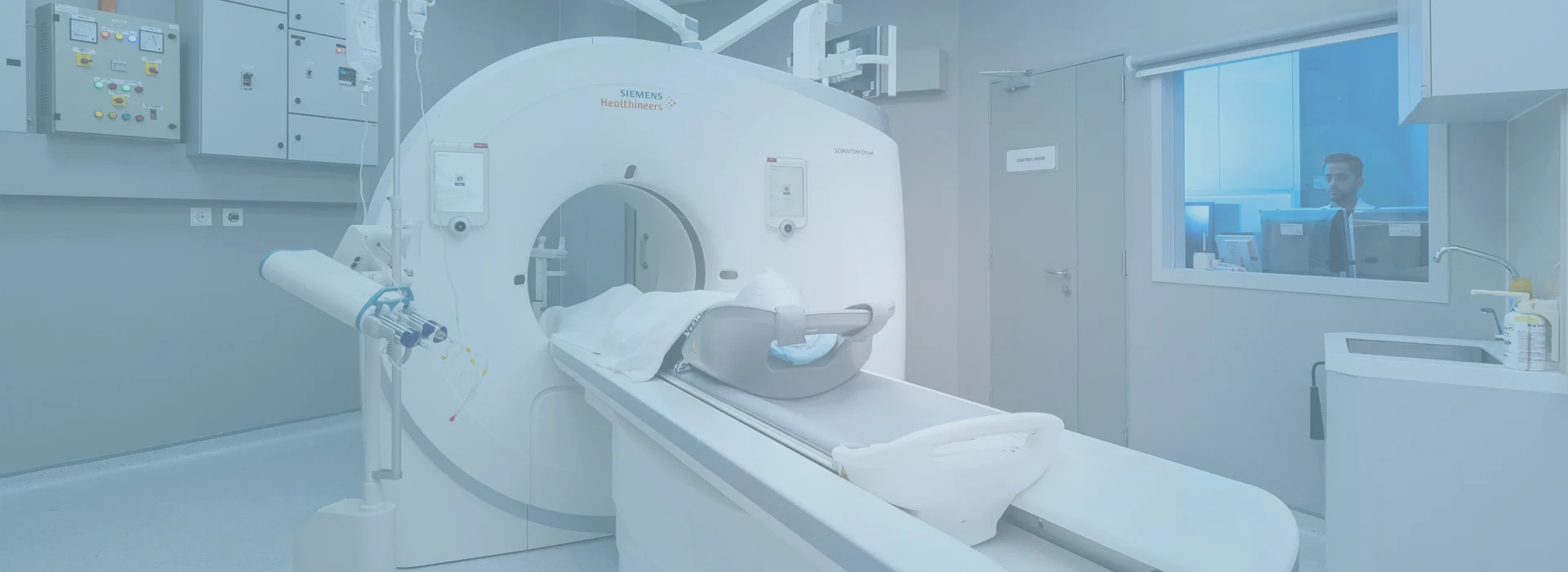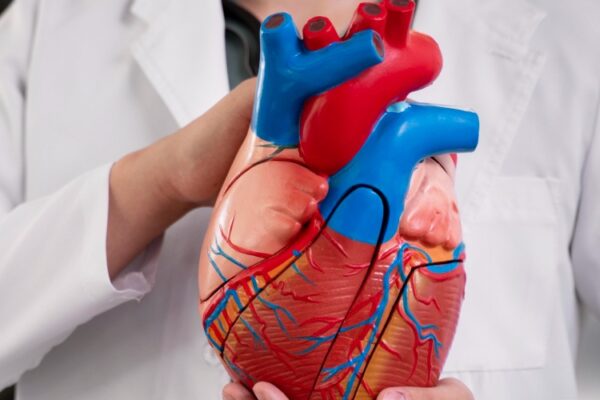
25 Mar Why Body Composition Analysis Matters More Than You Think
Why Body Composition Analysis Matters More Than You Think
By Island Hospital | Mar 27, 2024 12:00:00 PM
Many people strive to be healthier or get in better shape, but they often find themselves stuck or do not see the results they expected. This can lead to frustration and confusion about what they’re doing wrong.
One key piece of the puzzle many overlook is body composition analysis. Unlike simple weight measurement, which doesn’t tell the whole story, body composition analysis breaks down exactly what your body consists of, from fat to muscle and beyond.
Knowing that 2.5 billion adults are either overweight or obese (WHO, 2022) highlights just how crucial it is to understand our bodies.
Our article dives into why analyzing your body’s composition matters more than simply tracking pounds on a scale.
We will also explore methods for measuring body composition and explain how this knowledge can empower you to tailor your diet and exercise plans more effectively.
What is Body Composition Analysis (BCA)?
Body Composition Analysis (BCA) involves describing and quantifying the different components of the human body, such as fat mass (FM) and fat-free mass (FFM), including skeletal muscle mass.
It provides insight beyond simple weight measurements, allowing individuals to understand the ratio of muscle to fat in their bodies.
This information guides people in:
- Setting realistic fitness goals
- Differentiating between muscle and/or fat gain or loss during weight changes
- Optimizing exercise routines for better outcomes
Why Do We Need It Since We Have BMI?
Many people rely on Body Mass Index (BMI) as a universal gauge for health, but this method has its flaws.
BMI cannot tell the difference between muscle mass and fat in the body. This means someone with a high muscle mass might be labeled overweight or obese, even if they have a healthy body fat percentage.
Similarly, an individual with a low BMI could still harbor unhealthy levels of body fat, posing hidden health risks.
Another critical point is that BMI does not offer detailed insights into one’s body’s makeup. It falls short in assessing overall health because it doesn’t break down the human form into key components such as bone density, muscle mass, tissue volume, and water weight.
Understanding that consistency in achieving ideal body composition is crucial overshadows the simplicity of relying solely on BMI measurements for health assessment.
Drawbacks of Not Knowing Your Body Composition
Not knowing your body composition can lead to setting unrealistic fitness goals and measuring progress incorrectly.
People might work hard at the gym but see little change because they cannot tell apart muscle from fat mass.
This confusion leads to ineffective workout routines and a lack of motivation when progress seems slow or nonexistent.
Ignoring your body composition makes it harder to identify areas needing improvement for better health and wellness.
Without this knowledge, determining the cause of weight fluctuations is challenging, and making informed decisions about health is difficult.
Moreover, assessing disease risk related to obesity or nutrition-related chronic diseases becomes almost impossible without understanding how much fat versus muscle one has.
How Fat and Muscle Mass Impact Your Health?
Fat and muscle mass play critical roles in maintaining overall health, affecting everything from physical strength to metabolic efficiency.
Recognizing the balance between these components can guide individuals towards making healthier lifestyle choices.
The Difference Between Being Thin and Being Healthy
Being thin does not automatically mean being healthy.
Many people have a low body weight yet lack muscle mass and carry a higher percentage of body fat, particularly visceral fat, which poses serious health risks.
These include increased chances of developing chronic diseases like metabolic syndrome, heart disease, obesity, and diabetes.
It’s crucial to understand that good health involves maintaining a balance between muscle mass and adipose tissue rather than focusing solely on the number on the scale.
Engaging in strength or resistance training plays an essential role in building and preserving muscle mass.
This approach not only enhances physical appearance but also boosts metabolism and improves overall health by reducing the risk factors associated with excessive body fat.
A lean physique with adequate muscle tone often indicates better fitness levels and lower susceptibility to chronic illnesses compared to simply having a lower body weight without sufficient muscle development.
The Importance of Differentiating Between Muscle and Fat
Differentiating between muscle and fat is crucial for a comprehensive understanding of one’s health.
Muscles play a vital role in metabolic rate, meaning more muscle mass can lead to more calories burned at rest.
On the other hand, excessive body fat, particularly around the abdomen, can increase the risk of chronic diseases such as type 2 diabetes and cardiovascular disease.
Therefore, accurately distinguishing these components through body composition analysis enables individuals to tailor their fitness goals effectively.
What are Common Methods of Body Composition Analysis?
Several techniques help experts accurately measure body composition, shedding light on the balance between fat, muscle, and other essential elements within the body.
Each method varies in complexity and accuracy, offering unique insights into an individual’s physical health status.
1. Skin Calipers
Skin calipers (or Skinfold Test) stand as a popular tool in the realm of body composition analysis.
Fitness professionals and health enthusiasts use these devices to measure skinfold thickness at specific points on the body.
This method allows them to estimate an individual’s body fat percentage with relative ease.
Although skin calipers bring convenience and accessibility to tracking progress, it’s crucial to recognize that their accuracy can be influenced by the technique of the person conducting the test.
2. Hydrostatic Weighing
Hydrostatic weighing stands out as a precise method for analyzing body composition.
This technique involves submerging individuals in water to determine their body density, fat mass, muscle mass, and overall body fat percentage.
The process applies Archimedes’ principle of buoyancy, which states that the buoyant force on a submerged object is equal to the weight of the fluid displaced by the object.
This method offers deeper insights into one’s health than traditional measurements like BMI can provide. It helps identify changes in muscle and fat mass over time, aiding in customizing fitness routines and dietary plans for better health outcomes.
3. Air Displacement Plethysmography
Moving from hydrostatic weighing, another advanced method for analyzing body composition is Air Displacement Plethysmography (ADP). This technique uses air instead of water to measure body volume and density.
ADP works by measuring how much air is displaced by the person’s body within the chamber. Since muscle and fat have different densities, ADP can effectively distinguish between them to provide a detailed breakdown of one’s physical composition.
By sitting inside a specialized chamber, an individual can get their fat mass, muscle mass, and body fat percentage accurately determined in minutes. The process is quick, non-invasive, and highly precise.
4. Dual Energy X-Ray Absorptiometry (DEXA)
Dual Energy X-Ray Absorptiometry (DEXA) stands out as a cutting-edge technology for assessing body composition.
Unlike traditional body mass index (BMI) measurements, which can oversimplify health assessments by not differentiating between muscle and fat, DEXA scans provide a detailed picture of the body’s makeup.
They accurately measure bone density, muscle mass, and fat content, offering an insightful glimpse into overall health. This method supports individuals in understanding the true cause behind weight fluctuations—whether they stem from changes in fat or muscle.
Utilizing low-dose X-rays to differentiate between various tissues in the body, DEXA enables precise measurement of bone mineral density alongside fat and lean mass distribution across the entire body.
Its accuracy is crucial for tailoring fitness routines to meet personal health goals effectively. Whether aiming for weight loss or muscle growth, incorporating DEXA scans into a wellness strategy enhances decision-making around diet and exercise plans.
Ever wondered how a DEXA scan can help protect your bones from diseases like osteoporosis? Read our article on health screening tests for women to learn more!
5. Bioelectric Impedance Analysis (BIA)
Bioelectric Impedance Analysis (BIA) offers another sophisticated way to understand body composition.
This method estimates fat-free mass by sending a small electric current through the body and measuring how this current flows.
Because muscle contains more water than fat does, electricity moves through it more easily. This difference in conductivity helps BIA calculate the amount of muscle versus fat.
Tools such as the InBody DSM-BIA analyzer deliver detailed results sheets.
These sheets can assess risk factors for diseases, obesity-related concerns, and even fluid imbalances that stem from inflammation.
It’s a comprehensive approach that translates complex physical metrics into actionable health information without relying on outdated methods or invasive procedures.
6. Magnetic Resonance Imaging (MRI)
MRI generates images using strong magnetic currents. During this test, the body is scanned in segments, and these results are used to predict whole-body data.
MRI is considered the best tool for accurately measuring body composition, including muscle and fat. It can also distinguish between fat types, such as visceral and subcutaneous.
Unlike calipers, scales, DEXA, and bioimpedance, MRI provides precise measurements of tissue volumes and detects fat infiltration in organs directly.
MRI does not involve exposing patients to ionizing radiation, therefore avoiding the associated risks with radiation and allowing for repeated scans.
As MRI uses a strong magnet, all metal items such as jewelry, piercings, and dentures must be removed from the body before taking this test.
Do note that MRIs are not advisable for individuals with metal implants such as metallic chips, surgical chips, artificial joints, pacemakers, and insulin pumps.
Overall, MRI’s non-ionizing nature and precise measurements make it a safe and proven method for those seeking advanced or complete body composition assessment.
Detailed Look at Body Composition Outputs
Understanding your body composition outputs can illuminate the makeup of fat, muscle, and water within your body. This information empowers you to make informed decisions about your health and fitness journey.
1. Percent Body Fat (PBF)
Percent Body Fat (PBF) is a crucial measure in determining an individual’s health and risk for chronic diseases.
It accurately reflects the amount of fat mass compared to total body weight, highlighting differences between muscle and fat mass percentage.
A higher PBF indicates a greater amount of body fat, which may increase susceptibility to metabolic syndrome, heart disease, obesity, and diabetes.
Experts recommend monitoring PBF as part of a comprehensive approach to managing one’s health effectively.
Reducing excess body fat while maintaining or increasing muscle mass plays a pivotal role in enhancing overall well-being and lowering risks associated with high levels of visceral adipose tissue.
Each method provides valuable data that supports individuals in making informed decisions about nutrition, physical activity, and lifestyle modifications aimed at optimizing body composition for long-term health benefits.
2. Skeletal Muscle Mass (SMM)
A higher portion of skeletal muscle mass (SMM) boosts metabolism and increases the basal metabolic rate, essential for efficient calorie burning throughout the day.
To build and maintain this crucial muscle mass, engaging in regular strength or resistance training is the key.
Such activities stimulate muscle growth and support long-term health benefits beyond simple weight management.
3. Body Water (TBW)
Total Body Water (TBW) reflects the total amount of water contained within a person’s body.
It plays an essential role in determining hydration status and identifying fluid imbalances.
Body water levels offer valuable information for designing personalized nutrition and fitness programs. This aspect of body composition analysis underscores the importance of considering more than just fat and muscle when assessing health and planning for wellness improvements.
How to Improve Your Body Composition
Improving your body composition requires a commitment to modifying your lifestyle and nutrition habits. Engaging in regular physical activity and being mindful of your dietary choices are crucial steps toward achieving better health outcomes.
1. Monitoring Calorie Intake
Monitoring calorie intake is crucial for anyone looking to enhance their body composition.
It involves tracking the calories you consume each day to effectively maintain, lose, or gain weight.
To monitor calorie intake, individuals can use various tools and apps designed for tracking food consumption along with physical activities. This enables one to generally make informed decisions about dietary habits and exercise routines based on the data.
By adjusting your calorie intake with balanced nutrients from macronutrients – protein, fat and carbohydrate, you lay down the groundwork for meaningful improvements in body composition.
2. Set Up Body Composition Macro Goals
After keeping track of calorie intake, it’s essential to focus on macro goals for body composition.
Macros, short for macronutrients, include proteins, fats, and carbohydrates. Each plays a unique role in shaping your body composition.
Proteins support muscle repair and growth. Fats are vital for hormonal balance and energy, while carbohydrates fuel your workouts and day-to-day activities.
Setting specific macro targets helps you tailor your diet to meet your body composition objectives effectively.
For instance, someone aiming to build muscle might increase their protein intake compared to someone focused on endurance sports who may prioritize carbohydrates for energy.
Talk to a Dietitian or Nutritionist if you need to have a detailed meal plan based on your needs to achieve optimal body composition.
3. Regular Exercise to Build Muscle Mass
Engaging in regular exercise, specifically strength or resistance training, plays a critical role in building and maintaining muscle mass.
This approach not only enhances one’s physical appearance but significantly contributes to overall health by boosting metabolic rate, which aids in more efficient calorie burning even when at rest.
Strength training exercises involve the use of weights or resistance bands to challenge the muscles, prompting them to grow stronger over time.
Consistent muscle-building routines also improve balance, reduce the risk of injury, and support healthy aging by preserving muscle mass that naturally declines with age.
Incorporating such exercises into a fitness regimen is essential for individuals focused on improving their body composition, as this will help them achieve a balanced ratio of fat to muscle.
4. Be Consistent
While regular exercise is crucial in building muscle mass, maintaining a consistent routine underscores the journey towards achieving the desired body composition.
Progress hinges on steady, continuous efforts rather than sporadic bursts of activity.
Small, achievable goals foster long-lasting changes by promoting habits that contribute to muscle growth and fat reduction.
Consistency in tracking calorie and macronutrients intake, and engaging in strength or resistance training emerges as foundational for effectively altering body composition.
This disciplined approach ensures a balanced focus on nutrition and physical activity, vital for transforming body metrics over time.
Conclusion
Understanding body composition analysis unlocks a detailed picture of your health and fitness levels.
It goes beyond simple scales to provide a true reflection of what’s happening inside your body, allowing for more personalized and effective health strategies.
If you’re looking to take proactive steps towards a healthier lifestyle or simply want to monitor your progress, consider our health screening packages or book an appointment with Island Hospital for a thorough health checkup.
Your body deserves the best care, and we’re here to support you every step of the way.
FAQs
1. What is body composition analysis?
Body composition analysis measures the different parts of your body, like fat, muscles, bones, and water. It tells us more than just how much someone weighs; it shows how healthy that weight is.
2. Why should I care about my body composition?
Understanding your body composition helps you see if you’re at risk for health issues like obesity, hypertension, or insulin resistance. It’s not just about being underweight or overweight but knowing what’s going on inside your body.
3. How do doctors measure body composition?
Doctors use several methods to measure body composition, including skinfold calipers for a pinch test, underwater weighing, dual-energy X-ray absorptiometry (DEXA scan), and MRI scans.
4. Can anyone get a DEXA scan or an MRI for this purpose?
Most people can safely undergo a DEXA scan or MRI because these methods are very detailed and safe for checking what’s inside our bodies. However, individuals who are pregnant, or have pacemakers or artificial joints are advised to inform their doctor before getting these scans.
5. Is analyzing my body composition helpful in managing weight?
Yes! By knowing your fat-free mass versus fat mass through tests like the DEXA scan or using anthropometric methods, you can better plan diets or exercise routines to achieve target body weight in a healthy way.













